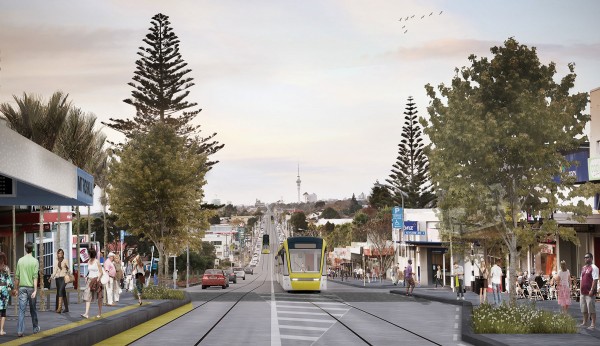
To support Auckland’s sustainable growth as a world class city, rapid transit infrastructure will deliver a modern, integrated public transport system of light rail, heavy rail, busways, bus priority lanes, and ferries.
Light rail is the centrepiece of Auckland’s rapid transit future. While it’s new for us, light rail has been proven globally to provide the kind of permanent infrastructure a successful and growing city needs – better connected communities, attracting investment for new developments and access to affordable housing.
Light rail in Auckland will run from the city centre to Māngere, connecting communities along the corridor including employment areas such as the city centre, Onehunga and Auckland Airport. It also involves a light rail corridor from the city centre to the northwest — another area of rapid growth for the city. The new light rail network will positively influence the way the city grows, providing sustainable connections to the city for new communities and enabling the further development of Auckland particularly in the west and northwest.
The Transport Agency is leading overall delivery of Auckland light rail and is partnering with Auckland Council, Auckland Transport and HLC. The development of light rail and other transport infrastructure will be integrated with urban development, in order to deliver more housing, employment and recreational opportunities close to the proposed light rail lines. Communities along the corridor will have the option to move from being car dependent to embracing public transport with all the benefits that brings.
Expanding the public transport network to include light rail will give Aucklanders more choices about how they travel. Light rail connects seamlessly with other transport modes such as heavy rail, buses, and shared walking and cycling paths. Unaffected by traffic and congestion, light rail can move more people at greater frequencies than buses, with faster on- and off-loading of passengers, and will likely have fewer stops than buses and greater capacity. It will contribute to a modern, attractive, liveable city with more frequent transport services, seamless connections and reduced reliance on the private car.